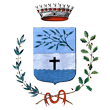La parrocchiale di Marone, dedicata a san Martino di Tour e all’Immacolata Concezione, si affaccia direttamente a lago, è preceduta da un ampio sagrato ed è affiancata dalla canonica. L'attuale chiesa fu edificata a partire dal 1710 su progetto di Bernardo Fedrighini da Predore, completata forse già nel 1717 e consacrata nel 1754. L'edificio che vediamo oggi andò a sostituire l'"Antica Parrocchiale", edificio non più esistente costruito all'incirca fra il 1532 e il 1572 e collocato sull'attuale sagrato. La facciata ha caratteri stilistici tipicamente barocchi, è coronata da un timpano curvo e la parte centrale, più sporgente, è scandita da un doppio ordine di lesene con capitelli ionici sotto e compositi sopra. L’ampio portale d’ingresso in pietra di botticino è semilunato e accoglie un grande stemma. Le cornici del finestrone centrale rettangolare, con vetrata che rappresenta san Martino, e quelle delle nicchie presentano coronamenti semilunati o curvi e sono decorate con modanature, riccioli, elementi floreali, anfore e motivi a conchiglia. Solo nel XX secolo furono inserite le statue dei Santi Antonio abate, Carlo Borromeo, Martino e Pantaleone, opere di Luigi Mainetti e Severo Trotta di Marone. Le nicchie superiori ospitano le statue di san Pietro e san Paolo. All'interno la chiesa è caratterizzata da un'aula unica con volta a botte e abside semicircolare, sei altari laterali e otto nicchie con statue dei Padri della Chiesa; le pareti sono nettamente divise dalla volta grazie ad una cornice dentellata molto aggettante. La decorazione ad affresco e stucchi è piuttosto ricca, soprattutto dal punto di vista plastico, e riprende alcuni particolari dell'esterno come le lesene, dipinte ad imitazione del marmo, e le elaborate cornici delle nicchie. Gli affreschi della volta si devono all’artista iseano Domenico Voltolini (1667-1746) e ai suoi collaboratori che qui lavorarono tra il 1720-25 e il 1740 raffigurando scene della vita di san Martino ed episodi mariani e cristologici. Dello stesso artista sono anche le pale della Sacra Famiglia con i santi Antonio di Padova e Ignazio di Loyola nella cappella centrale sinistra detta di san Antonio e la pala dell’Ostensione della Croce con santi, martiri e angeli nella cappella centrale destra detta della Vergine. Il grande affresco con la Crocifissione sulla controfacciata è di altra mano, sempre settecentesca. L'altare principale in marmo fu allestito tra il 1740 e il 1742; il medaglione del paliotto con il Sacrificio di Isacco è una delle più interessanti opere di Antonio Callegari mentre i due angeli oranti e i due santi che affiancano il tabernacolo sono di Gaudenzio Bombastone. La pala d'altare con l’Immacolata e i santi Martino, Pantaleone, Carlo Borromeo e Antonio abate è stata attribuita a Giuseppe Tortelli di Chiari (1662-1738) e collocata intorno al 1800-1802 entro un’incorniciatura in stucco dorato realizzata da Giovanni Battista Locatelli.
Marone’s parish church, which is dedicated to Saint Martin from Tours and the Immaculate Conception, faces directly on the lake. It is preceded by a large parvise and sided by the vicarage. The current church was built from 1710, according to the project designed by Bernardo Fedreghini from Predore, and it was maybe already finished in 1717 and sanctified in 1754. However, the building that we can see today, replaced a previous building which does no longer exist, the “Old Parish Church”, built between 1532 and 1572 which was located on the current parvise. The façade has typically Baroque style, it’s crowned by a curved tympanum and the central section, which is more protruding, is articulated by a double order of lesenes with lower Ionic capitals and upper composite capitals. The large entrance door in Botticino stone is of crescent-shape and it lodges a large crest. The frames of the large central rectangular windows with the glass representing Saint Martin and the frames of the niches, present crescent-shaped or curved cresting and they’re decorated with moulding, curls, floral elements, amphorae and shell-shaped motifs. The statues of Saint Abbot Anthony, Charles Borromeo and Martin and Pantaleon were only added in the 20th century, these statues are works by Luigi Mainetti and Severo Trotta di Marone. The upper niches present the statues of Saint Peter and Saint Paul. Inside, the church is characterised by a single hall with barrel vault and semi-circular apsis, six lateral altars and eight niches with the statues of the Church’s Fathers. The walls are neatly divided from the vault thanks to a very protruding indented cornice. The decoration in frescoes and stucco is quite rich, especially from a plastic point of view, and it takes up again some details of the outside, such as the lesenes, painted to imitate marble, and the elaborated cornices of the niches. The vault’s frescoes are by the artist from Iseo Domenico Voltolini (1667-1746) and his collaborators, who worked here between 1720-25 and 1740; they represent scenes of Saint Martin’s life, as well as Marian Christological events. The altarpieces of the Sacred Family with the Saints Anthony from Padua and Ignazio from Loyola are by the same artist too and they’re located in the central left chapel, which is named Saint Anthony’s chapel, as well as the altarpiece of the Ostension of the Cross with the saints, martyrs and angels, in the central right chapel, which is named chapel of the Virgin. The large fresco, with the Crucifixion on the counter-façade is by a different hand, still from the 17th century. The main marble altar was set up between 1740 and 1742; the medallion of the antependium, with Isaac’s Sacrifice, is one of Antonio Callegari’s most interesting works, while the two praying angels and the two saints next to the tabernacle are attributed to Gaudenzio Bombastone. The altarpiece with the Immaculate Mary and the Saints Martin, Panthaleon, Charles Borromeo and Abbot Antony was attributed to Giuseppe Tortelli from Chiari (1662-1738) dating back to 1800-1802 is framed by golden stucco created by Giovanni Battista Locatelli.
